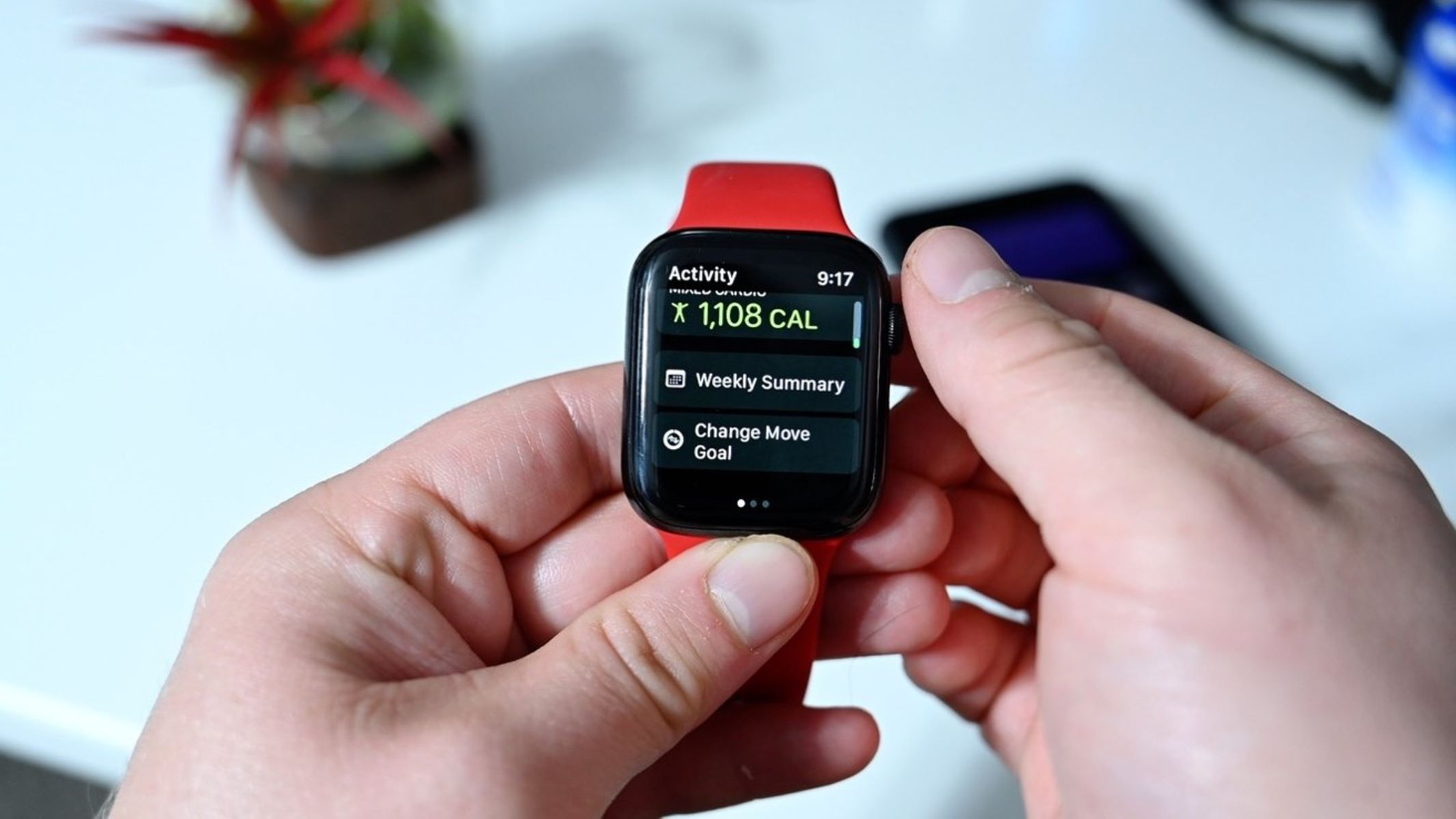Home>Misc>Featured>How Many Calories Burned Walking At A Regular Pace


Featured
How Many Calories Burned Walking At A Regular Pace
Published: October 4, 2023
Find out how many calories you can burn by walking at a regular pace. Explore our featured guide and start your fitness journey today!
Introduction
Walking is a simple yet effective form of exercise that can be easily incorporated into your daily routine. Whether you prefer a leisurely stroll or a brisk walk, this low-impact activity offers numerous health benefits. Not only does it improve cardiovascular fitness, but it also helps with weight management, strengthens muscles, and boosts mental well-being.
Walking at a regular pace is an activity that almost anyone can do, regardless of age or fitness level. Whether you’re walking to work, taking a stroll in the park, or completing laps around your neighborhood, it’s important to understand the number of calories you’re burning during these walks. This knowledge can help you track your progress, set goals, and make adjustments to your exercise routine to achieve optimal results.
In this article, we will delve into the factors that affect how many calories you burn while walking at a regular pace. We will also provide you with some insights on how to calculate the number of calories burned during your walks, as well as some tips to increase the calorie-burning potential of your walking routine.
Whether you’re looking to lose weight, maintain a healthy lifestyle, or simply enjoy the countless benefits of walking, understanding the calories burned during a regular-paced walk is essential. So, let’s take a closer look at the factors that come into play when calculating this value and how you can maximize the benefits of walking for your overall well-being.
Benefits of Walking
Walking offers a wide range of benefits for both physical and mental health. Incorporating regular walks into your routine can help improve your overall well-being in various ways. Here are some key benefits of walking:
- Improves cardiovascular fitness: Walking at a regular pace increases your heart rate and improves blood circulation, which strengthens your heart and reduces the risk of cardiovascular diseases.
- Aids in weight management: Walking is a great way to burn calories and maintain a healthy weight. By incorporating regular walks into your routine, you can increase your calorie expenditure, leading to weight loss or weight maintenance.
- Strengthens muscles and bones: Walking engages multiple muscle groups, including those in your legs, core, and arms. It helps tone and strengthen these muscles, promoting better balance and stability. Additionally, walking is a weight-bearing exercise, which helps to improve bone density and reduce the risk of osteoporosis.
- Boosts mood and mental well-being: Walking releases endorphins, which are natural feel-good hormones that can elevate your mood and reduce stress and anxiety. It also provides an opportunity to clear your mind, improve focus, and boost creativity.
- Reduces the risk of chronic diseases: Regular walking has been shown to lower the risk of chronic diseases such as type 2 diabetes, high blood pressure, and certain types of cancer. It also helps control blood sugar levels and improves insulin sensitivity.
- Enhances longevity: Studies have indicated that regular walking can increase life expectancy. It promotes a healthy heart, reduces the risk of premature death, and improves overall quality of life.
Walking is a low-impact activity that is accessible to people of all ages and fitness levels. Whether you’re a beginner or a seasoned fitness enthusiast, walking can be customized to suit your needs and abilities. It’s a versatile exercise that can be done alone or with a walking buddy, making it a social and enjoyable activity.
Now that we’ve explored the benefits of walking, let’s dive into the factors that can affect the number of calories burned during a regular-paced walk.
Factors Affecting Calories Burned
The number of calories you burn while walking at a regular pace can vary depending on several factors. Understanding these factors can help you estimate your calorie expenditure more accurately. Here are the key factors that influence the calories burned during a walk:
- Body weight: The more you weigh, the more calories you tend to burn during physical activity. This is because moving a heavier body requires more energy. For example, a person weighing 180 pounds will burn more calories walking at the same pace as someone weighing 140 pounds.
- Walking speed: The pace at which you walk plays a significant role in the number of calories burned. Walking at a faster pace increases your heart rate and requires more energy expenditure, resulting in a higher calorie burn compared to a leisurely stroll.
- Distance covered: The total distance you walk also influences the number of calories burned. Walking a greater distance equates to more time spent active and, subsequently, a higher calorie burn.
- Walking surface: Walking on different surfaces can impact the intensity of your walk and, therefore, the calorie burn. Walking uphill or on uneven terrain requires more effort and burns more calories compared to walking on a flat surface.
- Effort exerted: The level of effort you put into your walk affects the number of calories burned. Walking with a purposeful stride, swinging your arms, and engaging your muscles will increase the intensity of your walk and lead to a higher calorie burn.
It’s important to note that these factors are interrelated, and small changes in each factor can have a cumulative effect on the number of calories burned during your walk. To get a better estimation of your calorie expenditure, you can utilize online calculators or wearable fitness trackers that take these factors into account.
Now that we understand the factors that influence calorie burn during walking, let’s explore how you can calculate the calories burned during a regular-paced walk.
Calculating Calories Burned Walking at a Regular Pace
Calculating the number of calories burned during a regular-paced walk can help you track your progress and set goals for your fitness journey. While there are various methods and formulas available, one commonly used equation is the MET (Metabolic Equivalent of Task) formula. This formula estimates the energy expenditure of an activity based on the intensity level.
The MET value for walking at a regular pace is approximately 3.5. To calculate the calories burned per minute, you can use the following formula:
Calories Burned per Minute = MET value * Body weight (in kg) / 200
To estimate the total calories burned during your walk, multiply the calories burned per minute by the duration of your walk in minutes:
Total Calories Burned = Calories Burned per Minute * Duration of Walk (in minutes)
For example, if you weigh 70 kilograms (154 pounds) and walk for 30 minutes at a regular pace, the calculation would be as follows:
Calories Burned per Minute = 3.5 * 70 / 200 = 1.225 calories
Total Calories Burned = 1.225 * 30 = 36.75 calories
Please note that this calculation provides an estimate and may not be entirely accurate for everyone. Different individuals have varying metabolic rates and energy expenditure patterns.
If you prefer a more precise calculation, you can use fitness trackers, smartphone applications, or specialized devices that take into account factors such as heart rate, distance covered, and walking speed. These tools use advanced algorithms and biometric data to provide a more accurate measure of your calorie burn during a walk.
Now that we know how to calculate calories burned, let’s explore the average number of calories burned when walking at a regular pace.
Average Calories Burned Walking at a Regular Pace
The number of calories burned while walking at a regular pace can vary from person to person based on factors such as weight, age, and fitness level. On average, a person weighing around 150 pounds (68 kilograms) can expect to burn approximately 150-200 calories per hour of walking at a regular pace.
Here is a breakdown of the average calories burned for different durations of walking at a regular pace:
- 20 minutes: 50-70 calories
- 30 minutes: 75-100 calories
- 45 minutes: 110-150 calories
- 1 hour: 150-200 calories
- 2 hours: 300-400 calories
Keep in mind that these figures are estimated averages and can vary based on individual factors. The actual number of calories burned will depend on factors such as body weight, walking speed, and intensity of effort put into the walk.
It’s worth mentioning that incorporating inclines or walking uphill can increase the intensity of your walk, resulting in a higher calorie burn. Walking at an incline engages more muscles and requires more energy expenditure compared to walking on a flat surface.
Remember, the key to optimizing your calorie burn while walking is to maintain a steady pace and to stay consistent with your walking routine. By gradually increasing your time and intensity, you can continue to challenge yourself and burn more calories over time.
Now that we have covered the average calories burned while walking at a regular pace, let’s explore some tips to increase the number of calories burned during your walks.
Tips to Increase Calories Burned while Walking
Are you looking to maximize the calorie burn during your walking sessions? Here are some tips to help you increase the number of calories burned while walking at a regular pace:
- Incorporate intervals: Add brief intervals of higher intensity walking into your routine. For example, alternate between a regular-paced walk and a faster-paced walk or short bursts of jogging. This will elevate your heart rate and increase calorie expenditure.
- Choose varied terrains: Opt for routes that include hills, slopes, or uneven surfaces. Walking on inclines or challenging terrains requires more muscular effort, leading to a higher calorie burn compared to walking on flat surfaces.
- Add weight or resistance: Consider adding ankle weights or using walking poles to engage your muscles more intensely. These added weights or resistance bands can increase the effort required, resulting in a greater calorie burn.
- Increase your pace: Gradually increase your walking speed to challenge your cardiovascular system and burn more calories. Your body will adapt to the increased intensity, so aim to maintain a brisk pace throughout your entire walk.
- Include incline walking: If possible, find routes with hills or inclines. Walking uphill engages your leg muscles more vigorously and elevates your heart rate, leading to a higher calorie burn. If outdoor inclines are not available, consider using a treadmill with incline settings.
- Stay consistent: Regularity is key when it comes to burning calories. Aim to walk at least 30 minutes per day, five days a week, or adjust the duration based on your fitness level. Consistency will help increase your fitness level and overall calorie burn.
- Engage your arms: Pump your arms while walking to engage your upper body. This not only helps tone your arms but also increases the overall workload, resulting in more calories burned.
- Maintain good posture: Keep your spine straight, engage your core muscles, and take confident strides. Good posture promotes better efficiency in your walking stride and allows you to burn more calories.
Remember to listen to your body and gradually progress your walking routine. It’s important to find a balance between challenging yourself and avoiding overexertion or injury. Monitor your heart rate, and if you have any health concerns or pre-existing conditions, consult with a healthcare professional before intensifying your walking routine.
By incorporating these tips into your walking routine, you can increase the number of calories burned and optimize the benefits you gain from your walks.
Now that we have explored various tips to maximize calorie burn while walking, let’s conclude our discussion on the benefits and strategies of walking at a regular pace.
Conclusion
Walking at a regular pace is a fantastic form of exercise that offers numerous health benefits. Not only does it improve cardiovascular fitness, aid in weight management, and strengthen muscles, but it also boosts mood and mental well-being. By understanding the factors that affect calories burned during a walk and employing strategies to increase intensity, you can optimize your calorie burn and maximize the benefits of your walking routine.
Factors such as body weight, walking speed, distance covered, walking surface, and effort exerted all play a role in determining the number of calories burned while walking. By using formulas like the MET calculation or utilizing advanced tracking devices, you can estimate your calorie expenditure more accurately. On average, a person weighing around 150 pounds can expect to burn 150-200 calories per hour of walking at a regular pace.
To increase the number of calories burned while walking, consider incorporating intervals, varied terrains, added weight or resistance, increasing your pace, including incline walking, maintaining consistency, engaging your arms, and maintaining good posture. These strategies can help elevate your heart rate, engage more muscles, and increase calorie expenditure during your walks.
Remember to start at your own fitness level, gradually increase intensity, and listen to your body. Walking is a versatile and accessible exercise that can be customized to your preferences and abilities. It’s a low-impact activity that can be enjoyed by individuals of all ages and fitness levels.
So, lace up your walking shoes, find a scenic route, and unleash the many benefits of walking at a regular pace. Whether you’re looking to improve your overall fitness, manage your weight, or simply enhance your well-being, walking is a fantastic choice to incorporate into your daily routine.








